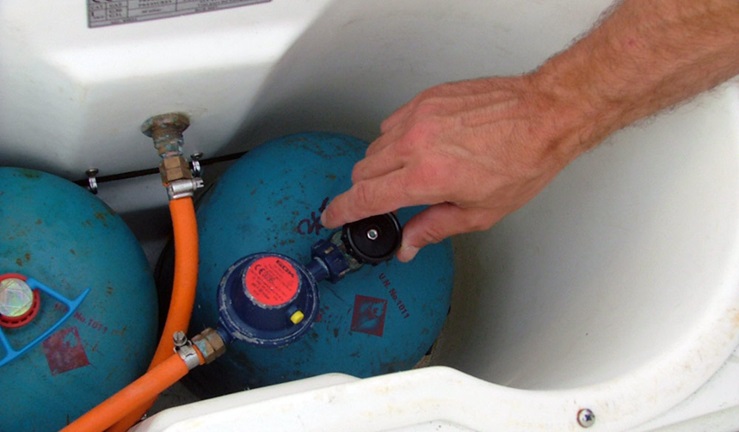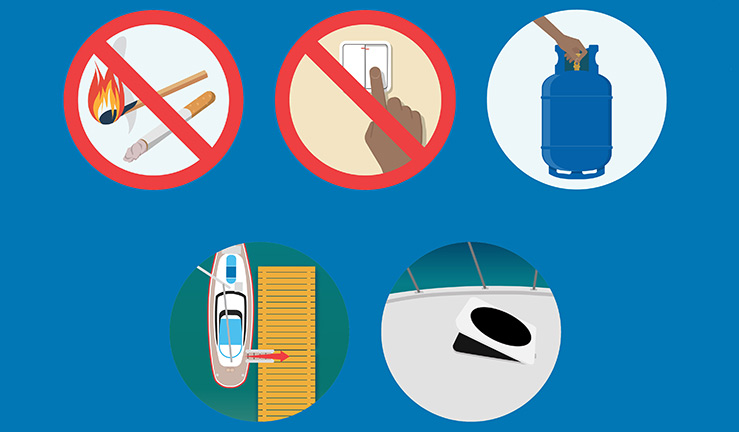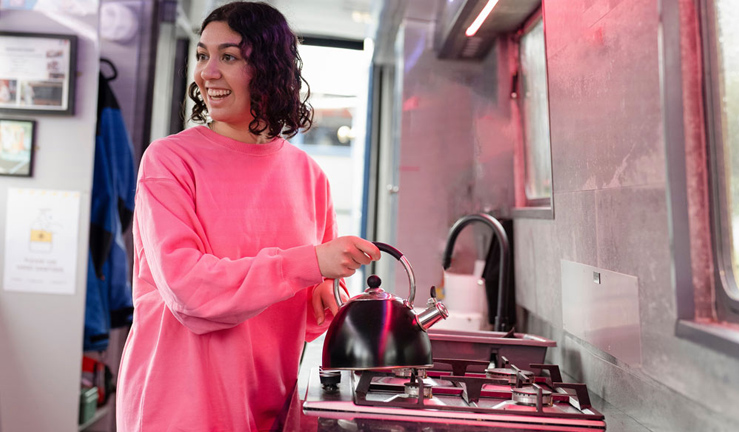Guide to gas safety on boats
Liquefied Petroleum Gas (LPG) fuels appliances onboard, providing hot water, central heating and much more. However, gas can be hazardous if not properly stored and the systems maintained.

Liquefied petroleum gas (LPG)
LPG is available in the UK as either Propane or Butane. Propane operates at a pressure of 37 millibars, working better in colder climates than Butane. Butane has a lower operating pressure of 28 millibars, but a higher calorific value resulting in higher flame temperatures. Because of this, you will find that it’s more commonly used in the UK as fuel for stoves on boats. However operating pressures between the two may vary in different countries.
Gas safety considerations
The way gas is used on boats is very different from the fixed pipeline systems used in buildings. Only appliances that are suitable for LPG and marine environments should be used on boats. The suitability of an appliance should always be checked with a manufacturer before installation.
Gas is denser than air, so in the case of a leak, it will make its way to the lowest point. On boats this is usually the bilges, where it will stay until the boat is aired.
With unsafe installations, storage, and maintenance of LPG Systems, there’s a risk of leaks, fires, explosions, and carbon monoxide poisoning. Although LPG is potentially hazardous, it can be used safely if gas equipment is properly installed, maintained, and inspected for damage.
Potential gas leak
In the event of a potential leak:
- Shut off the LPG supply at the cylinder valve(s).
- Extinguish naked flames and ignition sources (heaters, cooking appliances, pilot lights, cigarettes, etc).
- Do not operate electric switches.
- Ventilate the area with a through draught and evacuate the area if possible.
If leakage is from a cylinder and cannot be stopped, move the cylinder to where LPG can disperse away from the vessel (and other vessels). Take care not to spill LPG while moving the cylinder.
Do not use an installation that has leaked until it has been checked by a competent person.
Never test for a gas leak with a naked flame, as this will lead to an explosion. An electrical spark will also do the same, so avoid using electrical equipment around a suspected leak.

Gas storage onboard
Gas bottles should be stored upright in a dedicated locker which drains overboard. This will help prevent gas ending up in the bilges. The drain should be checked regularly for blockages, to do this spray a hose pipe down the drain.
For boats not manufactured with a gas locker, the simplest option may be securing the bottle on deck. However, this needs to be done carefully to prevent accidental damage. If stored on deck, bottles should not be in a position that allows leaking gas to enter the interior of the vessel. Be careful to not store the bottle near cabin ventilation inlets.
Most boats will also carry a spare cylinder, which should be given the same consideration as the cylinders in use. Although leaks in spare cylinders are less likely, if they are not securely positioned and protected from damage, leaks can still occur.
Maintenance and inspection
The RYA strongly recommends the regular maintenance and inspection of gas systems to identify potential problems early.
Gas safety devices
Flame supervision devices are routinely fitted to marine equipment, designed to shut gas off if the flame accidentally goes out.
Gas alarms should also be installed on boats, with the sensors positioned in locations where gas is likely to collect. If there is a gas leak, the alarm will go off when its detected.
Gadgets which automatically shut off gas when it is not in use are also available, alongside devices that monitor installations and indicate if there is a leak. For example, a bubbler device can be plumbed into the gas system, indicating the slightest leak. However, this may not be a particularly convenient location for regular inspection.

Using gas safely
Every boat should have a gas routine. What this is depends on the design of the boat, the layout of its gas installation and the skipper.
The safest option is for gas to be turned off at the bottle whenever it’s not in use. Some skippers will ask that the flame is extinguished by turning the bottle off, ensuring no gas remains in the pipe.
On many boats, the location and accessibility of the gas locker may make turning the gas off at the bottle an unattractive option. However, many boats are fitted with a secondary gas tap near the galley, which should be labelled, and is often more accessible for skippers to use.
Skippers are likely to take flame supervision devices and gas alarms into account when setting up a gas routine. They should consider the weak points of an installation, such as any joins and flexible hoses where a leak is more likely.
In rough weather gas should be turned off at the bottle and the bottle secured to ensure it cannot end up on its side or upside down. This would allow gas to enter the regulator at a dangerously high pressure, leading to leaking taps or dangerous flare-ups. Always make sure everyone onboard is aware of the gas routine.
Discover more about gas safety through the gas installation and maintenance.
